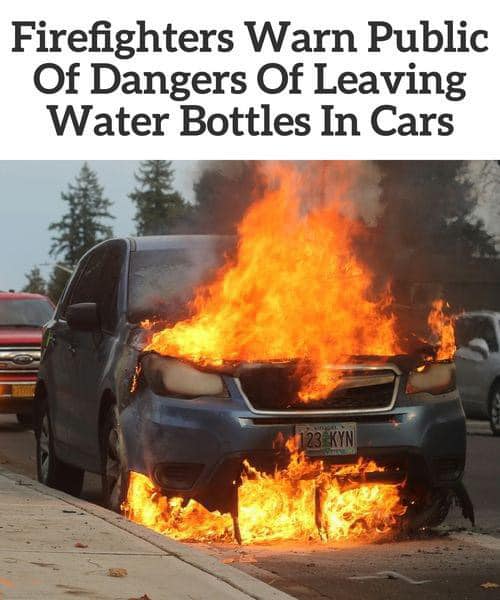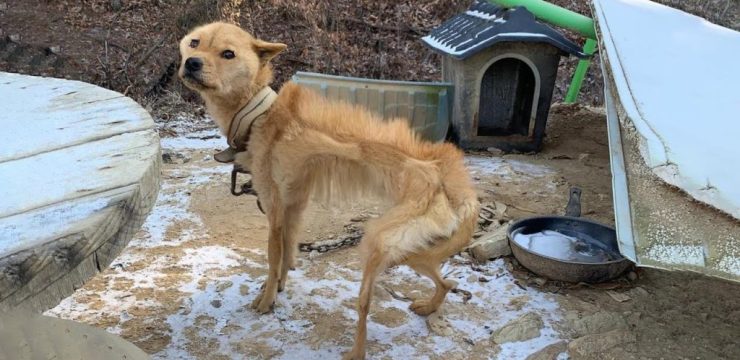Why Firefighters Warn Against Leaving Water Bottles in Cars
Leaving a water bottle in your car might seem harmless, but firefighters are sounding the alarm on a hidden danger that could turn your vehicle into a fire hazard. This article explores why this seemingly innocent action poses a risk, how it happens, and what you can do to prevent it.

H1: The Hidden Danger of Leaving Water Bottles in Cars
When we think of fire hazards, water bottles usually aren’t the first things that come to mind. However, under the right conditions, they can become a serious threat. Here’s what you need to know about this unexpected fire risk.

H2: How Can a Water Bottle Start a Fire?
It might sound like a scene from a science fiction movie, but the science behind it is very real. When sunlight passes through a plastic water bottle filled with water, it acts like a magnifying glass. The focused light can heat up surfaces to the point where they catch fire.
H3: The Science Behind It
Light refraction is the key player here. Just like how you can use a magnifying glass to focus sunlight and start a fire, a water bottle can do the same thing. The curved shape of the bottle, combined with the liquid inside, creates a concentrated beam of light that can ignite flammable materials.
H3: Real-Life Incidents
Firefighters have reported several cases where water bottles left in cars have led to fires. For example, a firefighter in Idaho discovered his car seat smoldering after sunlight, refracted by a water bottle, focused onto the upholstery. These incidents aren’t just theoretical—they’re happening in real life.
H2: The Dangers of Sunlight and Plastic Bottles
Leaving a water bottle in direct sunlight in your car is like setting up a small firestarter. The plastic bottle, when exposed to intense sunlight, can focus the rays onto a specific spot, raising the temperature to dangerous levels.
H3: Risk Factors
Not every water bottle will start a fire, but certain conditions increase the risk. The angle of the sunlight, the type of material inside your car, and even the time of day can all play a role. Flammable surfaces like fabric seats are particularly vulnerable.
H3: Why Cars Are at Risk
Cars, especially those parked in the sun, can become ovens. The heat inside a vehicle can rise quickly, and when you add a water bottle into the mix, you have a recipe for disaster. The enclosed space of a car also traps heat, making it easier for a fire to start and spread.
H2: Firefighters’ Recommendations to Prevent Fires
Firefighters across the country are spreading awareness about this issue and offering tips on how to prevent such fires from occurring. Their advice is simple yet effective.
H3: Don’t Leave Water Bottles in Your Car
The easiest way to avoid this risk is to take your water bottle with you when you leave your car. If you must leave it behind, make sure it’s stored in a shaded area or covered to block direct sunlight.
H3: Use Opaque Bottles
Switching to opaque or insulated bottles can also help. These bottles don’t allow sunlight to pass through, eliminating the risk of creating a magnifying effect.
H3: Park in the Shade
Whenever possible, park your car in a shaded area. Not only does this help keep the interior cool, but it also reduces the intensity of sunlight that might interact with items inside your vehicle.
H2: Public Awareness and Safety Campaigns
In response to this hidden danger, many fire departments have launched public awareness campaigns. These campaigns aim to educate the public on the risks and encourage safe practices.
H3: Spreading the Message
Firefighters are using social media, public service announcements, and community events to get the word out. The goal is to reach as many people as possible and prevent unnecessary fires.
H3: Collaboration with Other Agencies
In some areas, fire departments are working with other agencies, like local governments and schools, to spread this important safety message. By working together, they can ensure that more people are aware of the risks and know how to avoid them.
H2: Why You Should Take This Seriously
It’s easy to dismiss this warning as overly cautious, but the risks are real. Fires caused by water bottles may be rare, but when they happen, the consequences can be severe.
H3: Potential Damage
A fire in your car can lead to significant damage, not just to the vehicle itself but to anything inside it. Personal belongings, important documents, and even the car’s electrical system can all be affected.
H3: The Cost of Repairs
Repairing fire damage can be costly. In some cases, the car may be completely totaled, leading to a significant financial loss. Taking simple precautions can save you from this headache.
H2: Final Thoughts
While it might seem like an overreaction, the advice from firefighters to avoid leaving water bottles in your car is rooted in science and real-world incidents. Taking a few simple steps can protect you from a potentially dangerous situation.
H1: Conclusion: Stay Safe and Informed
Firefighters’ warnings about leaving water bottles in cars highlight a hidden danger that many of us overlook. By understanding how this can happen and following the recommended precautions, you can keep your vehicle and yourself safe. Remember, a little caution goes a long way in preventing fires and protecting your property. So next time you leave your car, think twice about that water bottle—it could be more dangerous than you think.





